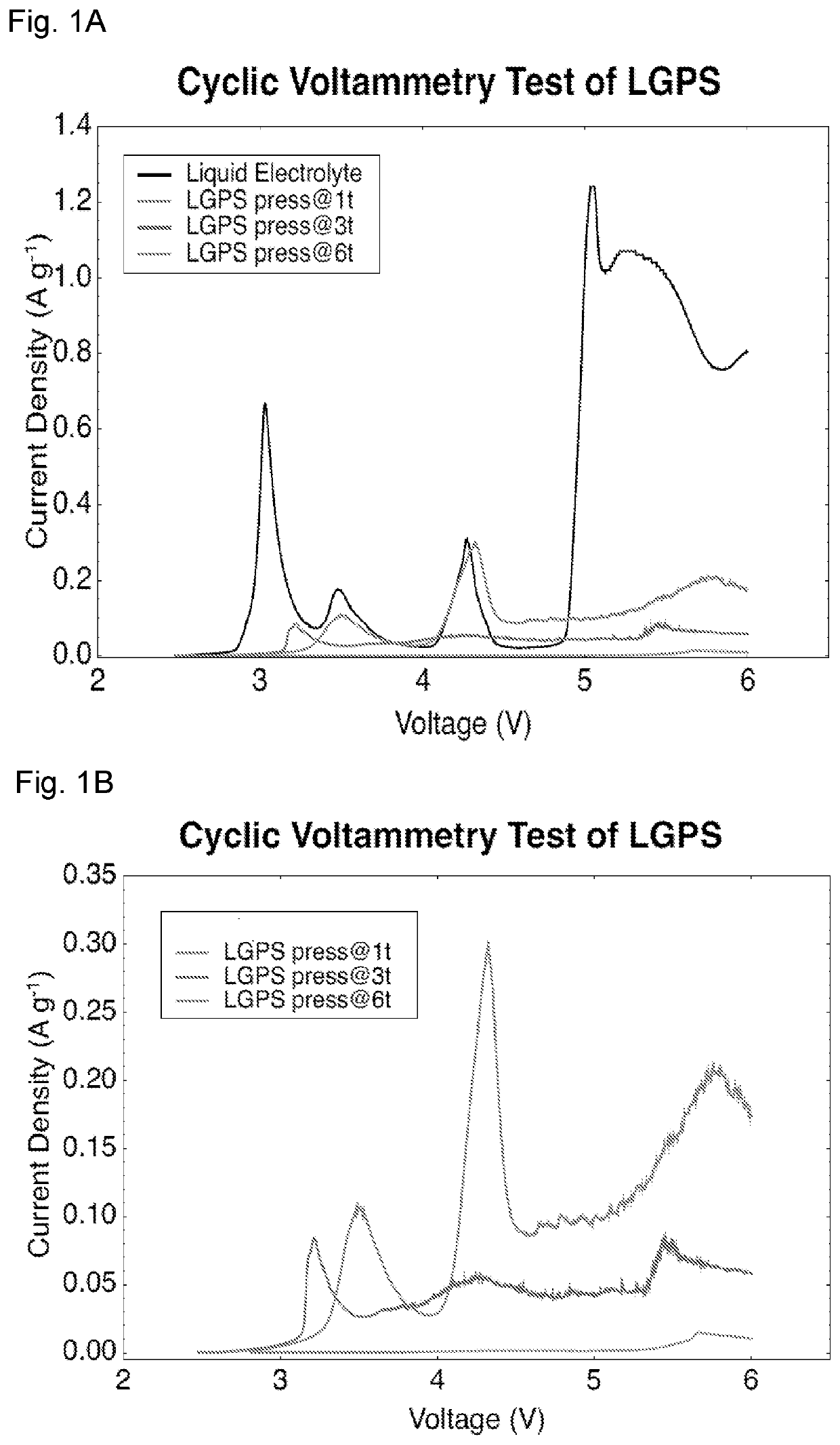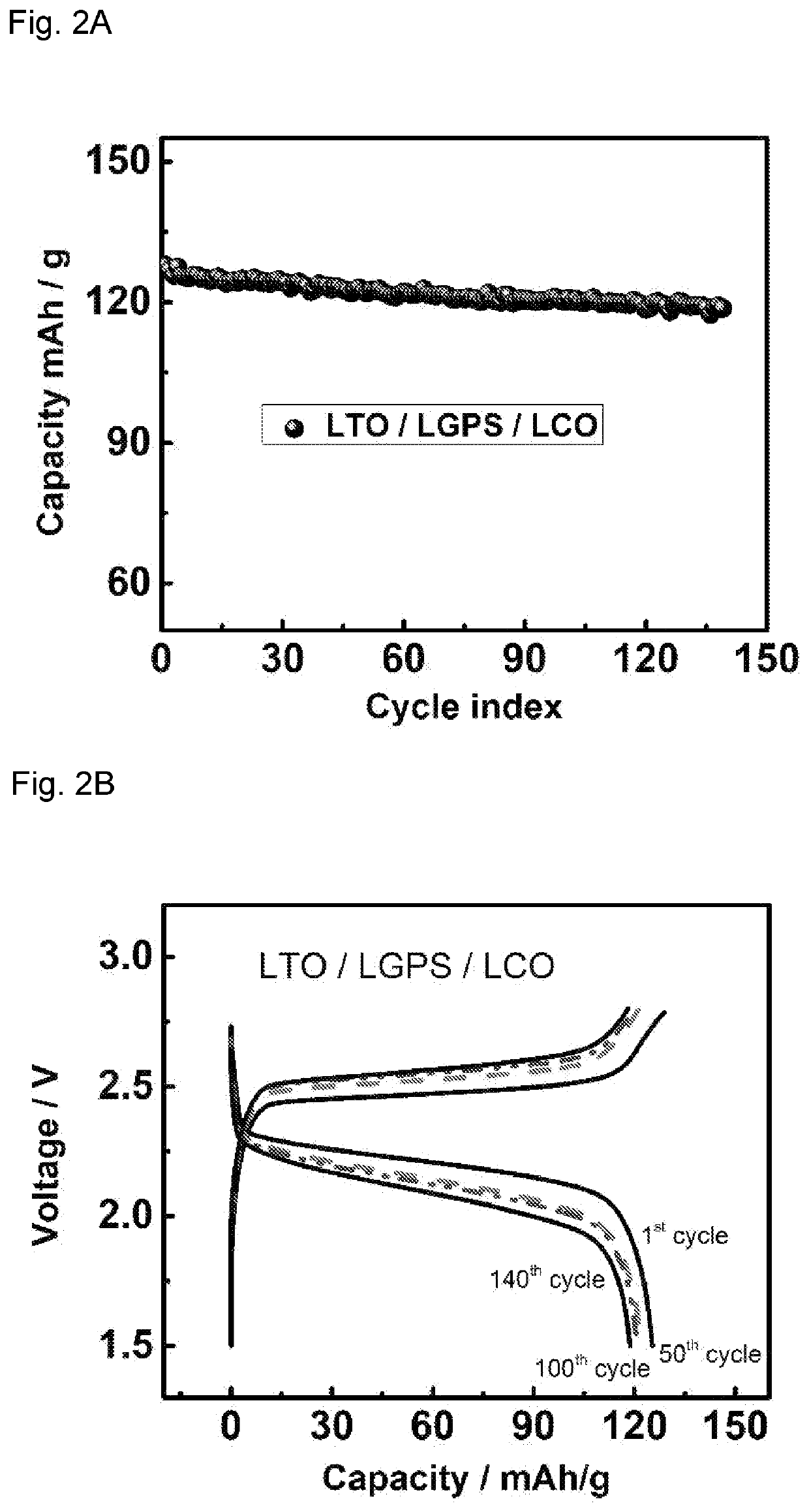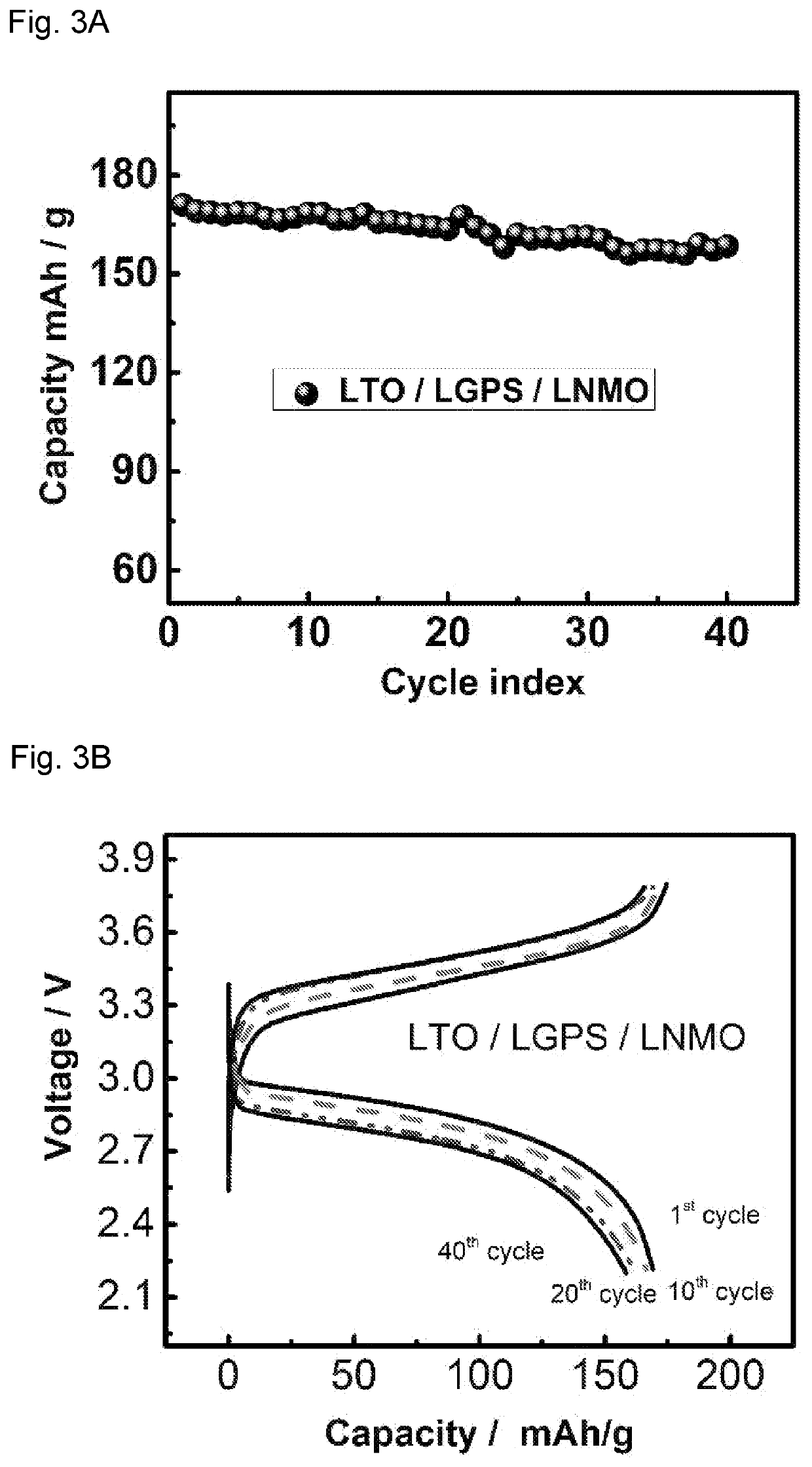Solid state batteries
a solid-state battery and battery technology, applied in the direction of secondary cell servicing/maintenance, cell components, sustainable manufacturing/processing, etc., can solve the problems of narrow stability window of the ceramic-sulfide family, achieve superior voltage stability, improve cycling performance, and excellent battery cycle performance
- Summary
- Abstract
- Description
- Claims
- Application Information
AI Technical Summary
Benefits of technology
Problems solved by technology
Method used
Image
Examples
example 1
[0091]The cyclic voltammograms (CV) of Li / LGPS / LGPS+C were measured under different pressures between open circuit voltage (OCV) to 6 V at a scan rate of 0.1 mVs−1 on a Solartron electrochemical potentiostat (1470E), using lithium (coated by Li2HPO4) as reference electrode. A liquid battery using LGPS / C thin film as cathode, lithium as anode and, 1 M LiPF6 in EC / DMC as electrolyte was also assembled for comparison. The ratio of LGPS to C is 10:1 in both solid and liquid CV tests.
[0092]The cathode and anode thin films used in all-solid-state battery were prepared by mixing LTO / LCO / LNMO, LGPS, Polytetrafluoroethylene (PTFE) and carbon black with different weight ratios. The ratios of active materials / LGPS / C are 30 / 60 / 10, 70 / 27 / 3, 70 / 30 / 0 for LTO, LCO and LNMO thin film electrodes, respectively. This mixture of powder was then hand-grinded in a mortar for 30 minutes and rolled into a thin film inside an argon-filled glove box with 3% PTFE added. Solid electrolytes used in all-solid-sta...
example 2
abilized LGPS Core-Shell Electrolyte Batteries
[0093]Theory—The Physical Picture
[0094]The mechanism by which strain can expand the LGPS stability window is depicted in FIG. 4A. Consider the decomposition of LGPS to some arbitrary set of decomposed products, denoted “D” (LGPS→D), at standard temperature and pressure. The Gibbs energy of the system as a function of the fraction of LGPS that has decomposed (xD) is given by the dashed orange line in FIG. 4A and analytically in equation 1.
G0(xD)=(1−xD)GLGPS+xDGD (1)
[0095]The lowest Gibbs energy state is xD=1 (all decomposed) and the initial state is xD=0 (pristine LGPS). Accordingly, the reaction energy is ΔG0=G0(1)−G° (0)=GD−GLGPS. This system is inherently unstable. That is, ∂xDG0 is negative for all values of xD. Hence, for any initial value of xD, the system will move to decrease G0 by increasing xD, ultimately ending at the final state xD=1.
[0096]Next, consider the application of a mechanical system that constrains the LGPS particle...
example 3
onal Method to Select Optimum Interfacial Coating
[0170]Like liquid counterparts, the key performance metrics for solid-electrolytes are stability and ionic conductivity. For lithium systems, two very promising families of solid-electrolytes are garnet-type oxides and ceramic sulfides. These families are represented, respectively, by the high-performance electrolytes of LLZO oxide and LSPS sulfide. Oxides tend to maintain good stability in a wide range of voltages but often have lower ionic conductivity (−1)1. Conversely, the sulfides can reach excellent ionic conductivities (25 mS cm−1)6,20 but tend to decompose when exposed to the conditions needed for battery operation.
[0171]Instabilities in solid-electrolytes can arise from either intrinsic material-level bulk decompositions or surface / interfacial reactions when in contact with other materials. At the materials-level, solid-electrolytes tend to be chemically stable (i.e. minimal spontaneous decomposition) but are sensitive to ele...
PUM
 Login to View More
Login to View More Abstract
Description
Claims
Application Information
 Login to View More
Login to View More - R&D
- Intellectual Property
- Life Sciences
- Materials
- Tech Scout
- Unparalleled Data Quality
- Higher Quality Content
- 60% Fewer Hallucinations
Browse by: Latest US Patents, China's latest patents, Technical Efficacy Thesaurus, Application Domain, Technology Topic, Popular Technical Reports.
© 2025 PatSnap. All rights reserved.Legal|Privacy policy|Modern Slavery Act Transparency Statement|Sitemap|About US| Contact US: help@patsnap.com



